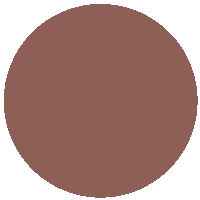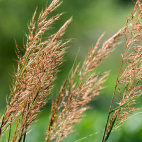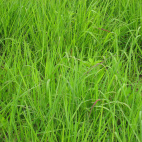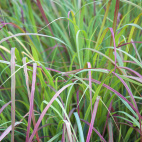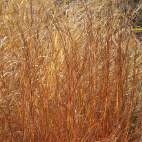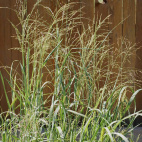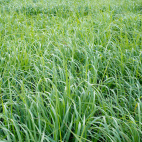Color
Availability
USDA Zone
Region
Type
Duration
Season
Germination
Soil
Sunlight
Height
Narrow Your Search
Color
Availability
USDA Zone
Region
Type
Duration
Season
Germination
Soil
Sunlight
Height
US Native Grass Seeds
The species on this page are not all technically classified as grasses, but the average gardener would probably call them "grass". Here you will find a variety of seeds of native grasses, sedges, reeds, and rushes. You might not think of grass as being as beautiful as flowers, but some of these wild grasses really are beautiful in their own way. Many of the native prairie grasses turn color in autumn, and the rusty bronze color of the stems adds a real fall aura to the planting. Winter birds benefit from the wild grass seeds, and small animals use the thick undergrowth for cover. The biomass of the grass is also the primary source for fuel when a prairie planting undergoes a planned burn.
-
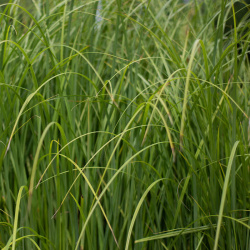 Cord Grass Seeds
Spartina pectinata
Forming dense colonies of tall vegetation, this water-loving grass adds beauty to shorelines and marshes during the warm seasons. This native perennial is an excellent choice for an area that has a lot of competition because it is quite aggressive.Quick View$3.48 Pkt - $16.57 / Oz
Cord Grass Seeds
Spartina pectinata
Forming dense colonies of tall vegetation, this water-loving grass adds beauty to shorelines and marshes during the warm seasons. This native perennial is an excellent choice for an area that has a lot of competition because it is quite aggressive.Quick View$3.48 Pkt - $16.57 / Oz -
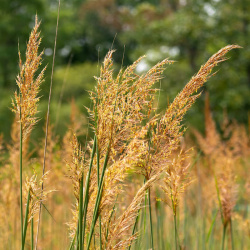 Indian Grass Seeds
Sorghastrum nutans
Indian Grass is on par with Big Bluestem in terms of both height and popularity. This warm-season perennial has large feathery seed plumes that turn a lovely rusty color in the fall, and become natural birdfeeders into the winter months.Quick View$3.48 Pkt - $5.96 / Oz
Indian Grass Seeds
Sorghastrum nutans
Indian Grass is on par with Big Bluestem in terms of both height and popularity. This warm-season perennial has large feathery seed plumes that turn a lovely rusty color in the fall, and become natural birdfeeders into the winter months.Quick View$3.48 Pkt - $5.96 / Oz -
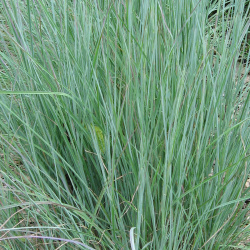 Little Bluestem Seeds
Schizachyrium scoparius
This warm-season perennial is probably the most popular native grass for short prairies. It is known as Bluestem because of the characteristic blue-purple stems at the base of the plant. These stems change into a bright copper color in the fall and persist as a food source for birds through the winter.Quick Viewx
Little Bluestem Seeds
Schizachyrium scoparius
This warm-season perennial is probably the most popular native grass for short prairies. It is known as Bluestem because of the characteristic blue-purple stems at the base of the plant. These stems change into a bright copper color in the fall and persist as a food source for birds through the winter.Quick ViewxLittle Bluestem Seeds
Schizachyrium scoparius
This warm-season perennial is probably the most popular native grass for short prairies. It is known as Bluestem because of the characteristic blue-purple stems at the base of the plant. These stems change into a bright copper color in the fall and persist as a food source for birds through the winter.
$3.48 Pkt - $6.84 / Oz -
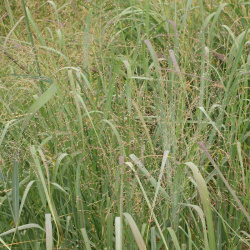 Switch Grass Seeds
Panicum virgatum
This popular native grass is common in many native restorations. It can grow it's airy seedheads in a wide range of soils, and is a medium height, making it a useful species. This grass is a warm season perennial, so the songbirds feast on the seeds into the fall season.Quick Viewx
Switch Grass Seeds
Panicum virgatum
This popular native grass is common in many native restorations. It can grow it's airy seedheads in a wide range of soils, and is a medium height, making it a useful species. This grass is a warm season perennial, so the songbirds feast on the seeds into the fall season.Quick ViewxSwitch Grass Seeds
Panicum virgatum
This popular native grass is common in many native restorations. It can grow it's airy seedheads in a wide range of soils, and is a medium height, making it a useful species. This grass is a warm season perennial, so the songbirds feast on the seeds into the fall season.
$2.98 Pkt - $5.96 / Oz
The species on this page are not all technically classified as grasses, but the average gardener would probably call them "grass". Here you will find a variety of seeds of native grasses, sedges, reeds, and rushes. You might not think of grass as being as beautiful as flowers, but some of these wild grasses really are beautiful in their own way. Many of the native prairie grasses turn color in autumn, and the rusty bronze color of the stems adds a real fall aura to the planting. Winter birds benefit from the wild grass seeds, and small animals use the thick undergrowth for cover. The biomass of the grass is also the primary source for fuel when a prairie planting undergoes a planned burn.
